Top 10 Cities for Tapas in Spain
Saturday, November 30, 2024
Spain is a country renowned for its vibrant culture, rich history, and delectable cuisine, but perhaps nothing embodies the Spanish spirit quite like tapas. These small, flavour-packed dishes bring people together to enjoy a variety of tastes and textures, reflecting regional specialities and innovative culinary twists.
Join me as we embark on a gastronomic journey through Spain, uncovering the top 10 cities that promise the most unforgettable tapas experiences. These cities offer a delightful array of tapas that will leave your taste buds craving more:
1. Seville

The Andalusian capital has more than 215 establishments that offer these small portions with the highest quality. Its gastronomy is full of traditional recipes such as "cazón marinado" - marinated dogfish or otherwise known as mako shark, the Montadito de Pringá or a very cool Gazpacho.
2. Granada

Granada ranks second in this ranking thanks to its more than 150 restaurants that work to offer the best tapas you have ever tasted. Its tasty, varied and simple gastronomy, based on the variety and richness of local products that nature offers, such as vegetables, meats from Sierra Nevada or fish from the Motril coast. Tapas such as roast ham, croquettes or "Carne en salsa - meat in sauce" will keep you coming back for more.
3. Santiago de Compostela

Santiago de Compostela has 72 restaurants specialising in tapas. The Galician city stands out gastronomically for its seafood, considered the best in Europe, although we cannot ignore its excellent meats. All this translates into spectacular snacks that, enjoyed with a good bottle of Albariño, will make you touch the heavens.
4. Cadiz

Cadiz has 82 restaurants specialising in tapas. Cuttlefish, bluefin tuna, shrimp omelette or mackerel with piriñaca definitely stand out. Typically food in Cádiz is made up of a variety of dishes and delicacies predominantly from the sea.
5. Malaga

Málaga has 137 restaurants specialising in tapas. Malaga's gastronomy is characterised by being healthy, of quality, varied and, above all, well-priced. The art of tapas in Malaga goes much further than just tasting small and tasty snacks; tapas are enjoying the company of friends, a good bottle of wine, a chat and letting yourself get impregnated by the open character of the people of Malaga. The fried fish or the Malaga salad is not to be missed.
6. Salamanca

Salamanca has 76 restaurants specializing in tapas. Its gastronomy is recognized for its great variety and quality, with special emphasis on its legumes, denomination of origin, meats such as roast lamb and sausages such as Iberian ham or chorizo.
7. Toledo

Toledo has 55 restaurants specialising in tapas. Apart from its medieval beauty, Toledo has another attraction: its gastronomy. Toledo's cuisine is characterised by deep-rooted traditions and this is shown in its most typical tapas such as Repollo de Ludeña - cabbage, grilled octopus or the Bomb at the Trebol restaurant.
8. Almeria

Almería has 114 restaurants specialising in tapas. Being a typically agricultural region with a coastal area, its cuisine is closely linked to the vegetable garden and to the sea. As a result, a multitude of tasty tapas such as fish roe in vinaigrette, grilled octopus or "patatas a la pobre" will make you extend your stay in this wonderful city.
9. A Coruña

A Coruña has 84 restaurants specialising in tapas in which fish and seafood are the protagonists. Tapas and servings of the highest quality can be found throughout the bars, taverns and restaurants all over A Coruña, along with wines, beers and a sensational atmosphere. The octopus, the empanadas and the pork shoulder should definitely be on the list.
10. Pontevedra

Pontevedra has 68 restaurants specialised in tapas. It achieved a score of 5.81 out of 10 and a multitude of small bars that populate every square and every alley, and that will delight everyone who wants to try the fantastic traditional Galician cuisine. Seafood, with its famous oysters and cockle patties, or fish and lamprey as the main protagonist, is the most requested in bars and restaurants. But you can also enjoy good pork and beef.
Start eating!
 1
Like
Published at 12:54 PM Comments (1)
1
Like
Published at 12:54 PM Comments (1)
Pozo de los Humos: Spain’s Most Beautiful Waterfall, a Hidden Gem in Salamanca
Friday, November 8, 2024
Nestled within the awe-inspiring Parque Natural de los Arribes del Duero, the Pozo de los Humos waterfall has recently been crowned the most beautiful waterfall in Spain, according to the loyal followers of Escapada Rural. Located between the provinces of Salamanca and Zamora, this captivating cascade, with its majestic 50-metre drop, offers an unforgettable visual spectacle heightened by the mist and vapour that emanate when the water collides with the pool below.
A Stunning Autumn Destination
Autumn emerges as the quintessential season to revel in the natural splendour of Pozo de los Humos. The seasonal rainfall swells the flow of the Uces River, culminating in a dramatic plunge into a narrow canyon. This descent conjures a rising cloud of mist and vapour, enhancing the distinctive “smoke” effect that lends the waterfall its evocative name. Coupled with the vibrant autumnal scenery, the Pozo de los Humos transforms into an idyllic haven for those yearning to disconnect and immerse themselves in nature's tranquillity.
One of Pozo de los Humos' greatest appeals lies in its accessibility from various points, affording visitors the opportunity to explore multiple hiking routes. From the municipality of Masueco in Salamanca, an approximately three-kilometre trail leads to a scenic lookout, where the waterfall's full glory unfolds before your eyes. This well-marked path meanders through an enchanting natural environment, surrounded by indigenous vegetation, heightening the hiking experience.
An alternative, shorter route begins in Pereña de la Ribera, Zamora, guiding adventurers to yet another vantage point offering a distinct but equally breathtaking view of the waterfall. Both trails enable visitors to savour the surrounding environment while providing unique perspectives of this remarkable cascade.
Pozo de los Humos is not only celebrated for its beauty but also forms part of an ecologically and culturally rich natural reserve. The Parque Natural de los Arribes del Duero, sculpted by the Duero and Uces Rivers, shelters a diverse array of flora and fauna. The canyon's precipitous walls are a sanctuary for protected species such as the golden eagle, griffon vulture, and black stork—birds that find a safe nesting habitat in this rugged terrain. Botanically, the region merges Mediterranean species like holm oaks, cork oaks, and olive trees with plants from more humid climates, creating a distinctive and ecologically valuable landscape.
Exploring Historical Treasures
Adding to its allure, the region near the waterfall is home to the enchanting Palla Rubia Cave, a historical gem that offers a tangible connection to the area's ancient past with its intriguing cave paintings. This cultural richness complements the natural beauty of the site, providing an immersive experience that links visitors to the region's remote history.
A Must-Visit for Nature Enthusiasts
This beautiful corner of Salamanca has firmly established itself as a favourite destination for those seeking a unique autumnal escape, particularly among enthusiasts of rural tourism and nature getaways. It is no surprise that Pozo de los Humos has been voted Spain's most beautiful waterfall; its breathtaking visuals and sensory experiences leave an indelible mark on all who visit.

Whether you are captivated by the ecological diversity, the vibrant autumn foliage, or the sheer natural spectacle of the Pozo de los Humos, this destination promises an unparalleled experience. As a refuge of biodiversity, a haven of history, and a treasure trove of natural beauty, the Pozo de los Humos stands as a testament to nature’s power and splendour, inviting you to lose yourself in its enchanting embrace.
For those planning to witness this marvellous waterfall firsthand, here are a few practical tips to ensure a memorable visit:
1. Best Time to Visit:
While Pozo de los Humos is breathtaking year-round, autumn and spring are particularly spectacular due to the increased water flow from seasonal rains, enhancing the waterfall’s mist and vapour effects.
2. Hiking Essentials:
Comfortable hiking shoes, ample water, and weather-appropriate clothing are essential for an enjoyable trek to the viewpoints. The trails, although well-marked, require a moderate level of fitness.
3. Respect Nature:
Maintaining the pristine beauty of Pozo de los Humos is crucial. Ensure you follow the 'leave no trace' principles, taking care to carry away all rubbish and not disturbing the flora and fauna.
4. Explore Beyond the Falls:
Take time to explore the Parque Natural de los Arribes del Duero beyond the waterfall. The park is rich with diverse wildlife, stunning landscapes, and additional hiking opportunities.
5. Historical Exploration:
Don’t miss the chance to visit the Palla Rubia Cave. The historical and cultural significance of the ancient cave paintings will enrich your understanding of this wonderful area.
6. Local Delicacies:
Complement your natural explorations with a taste of local cuisine. The surrounding villages offer a delightful array of traditional dishes made from locally sourced ingredients.
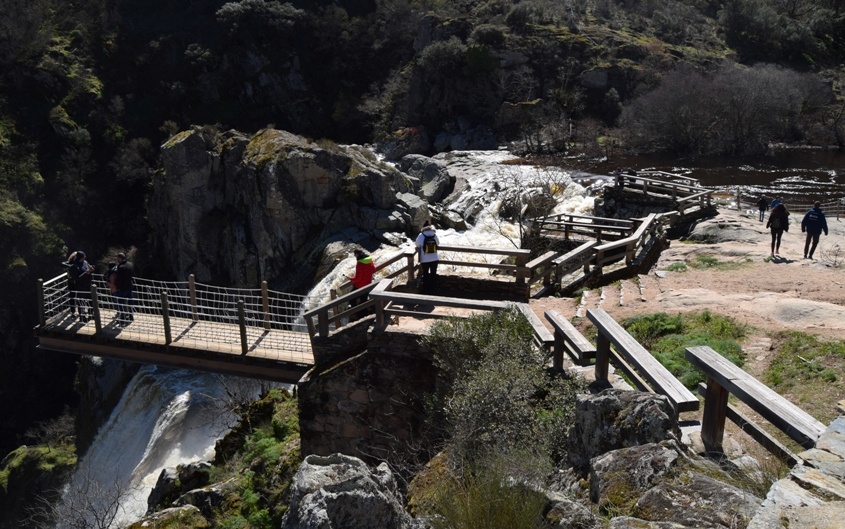
In conclusion, Pozo de los Humos is much more than just a waterfall—it's a natural wonder that embodies the essence of rural Spain’s unspoiled beauty and ecological richness. Whether you're an avid hiker, a history buff, or simply someone who appreciates natural beauty, this destination in Salamanca promises an unforgettable adventure. So pack your hiking boots, your sense of wonder, and prepare to be mesmerised by the breathtaking splendour of Pozo de los Humos, Spain’s most beautiful waterfall.
 0
Like
Published at 10:10 PM Comments (1)
0
Like
Published at 10:10 PM Comments (1)
Discover Galicia
Saturday, November 2, 2024
Galicia is water, land, wind… Galicia is feeling, passion, joy… Galicia is art, history, legend… It’s everything that makes you dream and marvel… Galicia is a land you’ll begin to discover little by little, step by step… Here are 10 places you mustn't miss, in no particular order:

1. Ribeira Sacra
The Ribeira Sacra, home to the largest concentration of Romanesque churches and monasteries in Europe. The Ribeira Sacra is a district marked by the River Miño and River Sil, which have shaped its spectacular landscape as they wind their way through the mountains. When this is combined with the faith and spirituality that can still be felt in the numerous monasteries dotted throughout the area, it means that this corner of Galicia cannot fail to appeal to all of your senses.
To mention the Ribeira Sacra is of course to mention wine, something that becomes obvious as soon as you set foot in the district: one of the most characteristic features of its landscape is the famous “socalcos”, the steeply terraced vineyards that run down the hillsides. And whilst you’re there, don’t miss the opportunity to taste some of the fantastic local wines, the product of one of the five Denomination of Origin wine-growing areas in Galicia, to which the district gives its name.
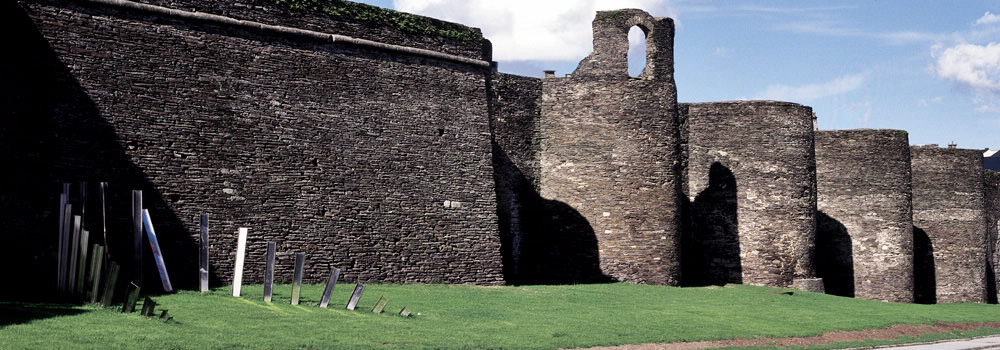
2. City walls of Lugo
The walls of Lugo are the best-preserved example of Roman military fortifications anywhere in the world. Designated a UNESCO World Heritage Site, the walls are an outstanding example of a way of building that exemplifies a variety of significant periods in the history of mankind.
From their Roman origins, through the tumultuous period of the Middle Ages and down to the ground-breaking and revolutionary 19th century, they constitute a unique monument that displays the different facets of the way in which the city of Lugo, in itself a conservation area of major importance, has evolved from the original Roman settlement of Lucus Augusti.

3. Serra da Capelada
Serra da Capelada boasts some of the tallest cliffs in Europe.
Their highest point is Vixía Herbeira, 620 metres above sea level. From this vantage point, you can appreciate the full grandeur and size of these cliffs, second only in height to the sides of the Norwegian fjords, which plunge almost vertically down to the sea, at an angle of over 80º
The views from here are absolutely spectacular: a wonderful panorama of the mighty Atlantic Ocean and the rugged coastline on either side of Santo André are without a doubt some of the best to be found anywhere along the whole of the coast of Europe.
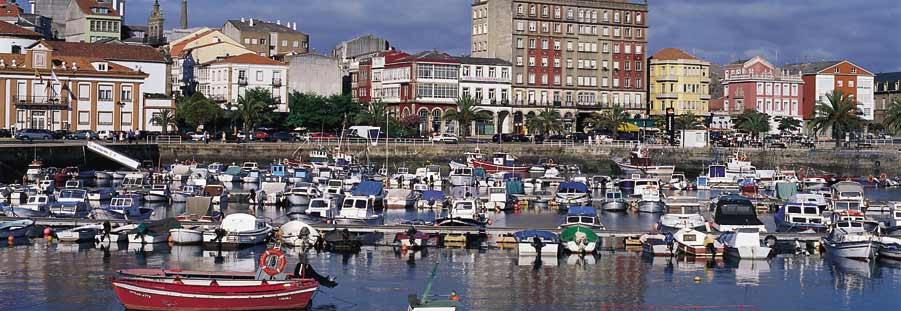
4. The Ferrol of the Age of Enlightenment
Although Ferrol was originally a town with a strong fishing tradition, during the 16th century its port started to become home to the ships of the Spanish Royal Navy. Subsequently, the monarchs Philip V, Ferdinand VI and Charles III were to be the driving force behind the construction of this magnificent complex, making the city the principal military base in Northwest Spain and the largest naval base of its day in Europe. On the inside, which can only be visited with prior permission, you will find the Sala de Armas (Armoury), until recently a training barracks and now residential quarters for Spanish Navy Marines deployed in Ferrol. You can also visit the Museo Naval (Shipbuilding Museum) and the Dique da Campá, one of the largest dry docks in the world. And you mustn’t forget Exponav, a permanent exhibition devoted to the world of shipbuilding.

5. The Tower of Hercules
In A Coruña, we can marvel at the Tower of Hercules, which dates back to Roman times and is the oldest working lighthouse in the world, the reason why it has been declared a UNESCO World Heritage Site. The Farum Brigantium was built by the Roman Empire at some time between the end of the 1st century AD and the beginning of the following one. Located at the entrance to the harbour of A Coruña, this magnificent lighthouse was designed as an aid to navigation along the rugged Galician coast, a strategic point on the sea route linking the Mediterranean to northeast Europe.
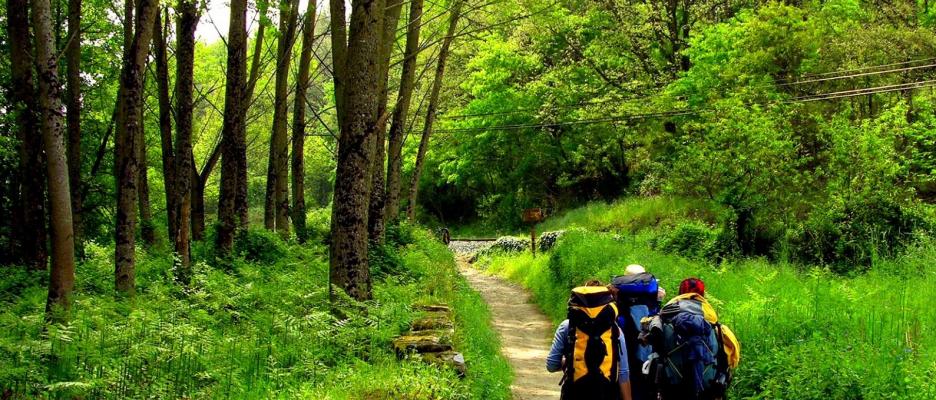
6. The Way of St James
You can’t leave Galicia without having walked at least part of the Way of St James.
The pilgrims’ route to Santiago played a fundamental role in the exchange of cultures between the Iberian Peninsula and the rest of Europe in the Middle Ages. For this reason, the Way of St James was nominated as the First European Cultural Itinerary by the Council of Europe. The so-called French Route, which has the longest tradition and is the best-known outside Spain, has also been declared a UNESCO World Heritage Site. Starting in Roncesvalles (Navarre), it finally reaches Santiago de Compostela some 750 kilometres later. A route, therefore, which links Europe with northern Spain, passing secluded churches, bridges, cathedrals, monasteries and other such places of interest, accompanied by a permanent backcloth of greenery.
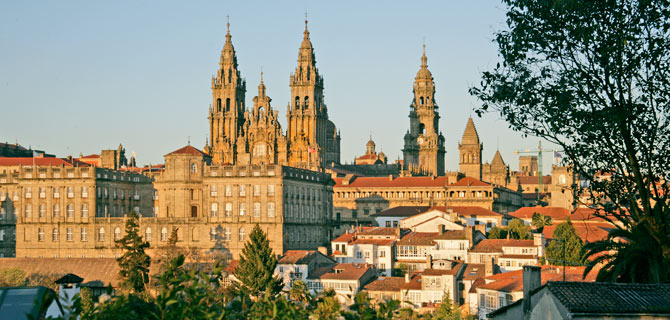
7. Santiago de Compostela
Santiago de Compostela has been the Christian pilgrims’ destination since the 9th century. From as far afield as the Baltic or the North Sea, thousands of pilgrims came on foot to the shrine of St James in Galicia, carrying their symbolic scallop shells along all the roads leading to Santiago, veritable paths of faith. To this we must add the fact that during the Romanesque and Baroque periods the shrine at Santiago de Compostela had a decisive influence on the evolution of architecture not just in Galicia, but throughout the whole of the north of the Iberian Peninsula
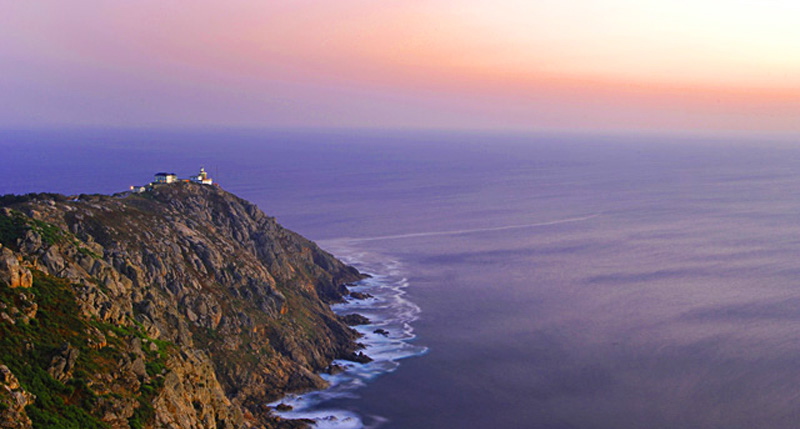
8. Cape Finisterre
Cape Finisterre, the destination of those pilgrims who, after visiting the St James’ tomb, continued their way along the route marked out for them overhead by the Milky Way until they could go no further.
Finisterre was considered during the period of Classical Antiquity to be the end of the known world. In fact, its geographical location and impressive sunsets led Decimus Junius Brutus (the Roman general who conquered Galicia) to believe that this was indeed the place where the sun died at dusk. The area surrounding this headland has been considered a magical place since the earliest times, and legend has it that the Phoenicians set up an altar, the Ara Solis, at which they worshipped the sun. So why not take time to discover this corner of our coast, where the magic of the place will guide your footsteps.

9. The Cíes Islands
The Cíes Islands, one of the archipelagos that together with the islands of Ons, Sálvora and Cortegada make up the Galician Atlantic Islands Maritime-Terrestrial National Park.
Their wealth of plant and animal life, combined with spectacular landscapes, make these islands a major and valuable cultural and environmental asset.
Cíes Islands is nature in its purest state. The boat trip from either Vigo, Cangas or Baiona Baiona, all of which have scheduled catamaran sailings to the archipelago in high season, enables us to admire their imposing presence at the mouth of the Ría de Vigo.
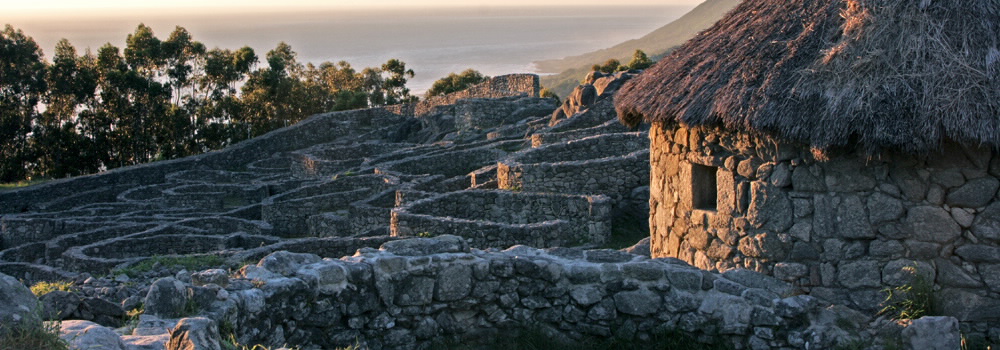
10. Santa Tegra
A Guarda is home to the Celtic hill fort and village of Santa Tegra, from where you’ll be able to enjoy “the best panoramic view of a Celtic hill fort in two countries“. Naturally enough, the views from here are unrivalled: your horizon is bounded only by Galicia, with the fishing town of A Guarda at its head, the mighty Atlantic Ocean and the neighbouring Portuguese coastline.
The view is even more impressive if we travel backwards in time: the inhabitants of this hill fort and village could enjoy it from their very dwellings. However, the site of this settlement wasn’t chosen for its views, but for more mundane reasons such as strategy and security, because from here they could monitor and control the sea traffic and the whole of the mouth of the River Miño.
 0
Like
Published at 9:35 AM Comments (0)
0
Like
Published at 9:35 AM Comments (0)
Spam post or Abuse? Please let us know
|
|